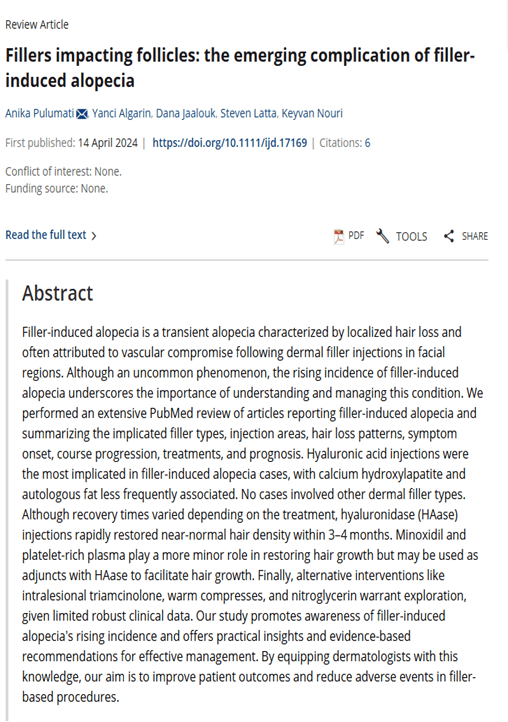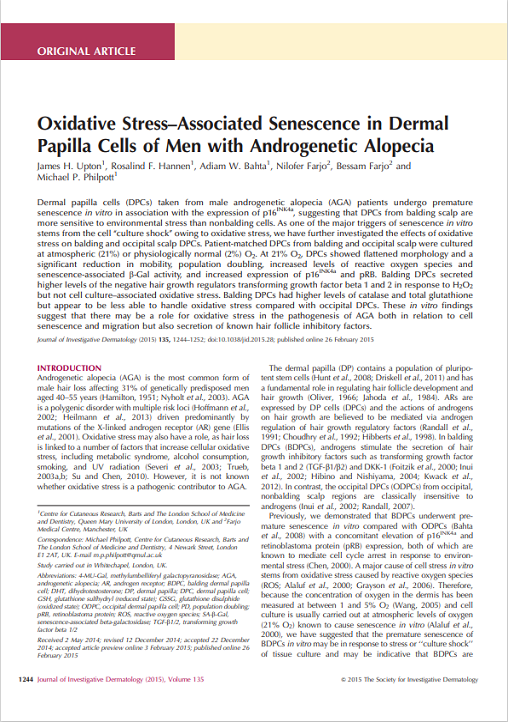
#24 Fillers impacting follicles: the emerging complication of filler‐induced alopecia
Anika Pulumati, Yanci Algarin, Dana Jaalouk, Steven Latta, Keyvan Nouri
This research paper addresses filler-induced alopecia, a rare but notable complication that can occur after dermal filler procedures. The study focuses on hair loss patterns observed following injections of common fillers such as hyaluronic acid (HA), autologous fat, and calcium hydroxylapatite (CaHA), particularly in the temporal region.
The primary suspected cause is vascular compromise resulting from pressure or injury to blood vessels during the procedure. This disruption in blood flow can temporarily impair hair follicle nourishment, leading to hair loss. In severe cases, however, it may result in permanent alopecia due to skin necrosis or irreversible damage to hair follicle stem cells.
Fortunately, with early diagnosis and appropriate treatment, most cases resolve within a few months. In cases involving HA fillers, hyaluronidase (HAase) injections are considered an effective intervention. Additional therapies such as minoxidil or platelet-rich plasma (PRP) can further aid hair regrowth. Some case reports have also noted the positive effects of triamcinolone injections, warm compresses, and nitroglycerin as adjunctive treatments.
For prevention, the study emphasizes the importance of procedures performed by experienced practitioners with thorough anatomical knowledge. Pre-procedural assessments, the use of safe injection techniques, low-pressure, low-volume delivery, and avoiding excessive filler volumes are strongly recommended. In particular, products containing adrenaline should be avoided, as they can mask early signs of vascular occlusion, such as blanching.
This study is significant as it compiles reported cases of filler-induced alopecia and provides practical information regarding injection sites, filler types, patterns of hair loss, and treatment approaches. While no cases involving certain fillers such as polyalkylimide, poly-L-lactic acid, or polymethyl methacrylate have been reported, the authors caution that their potential risks should not be ruled out and call for further research to better understand and manage this complication.





